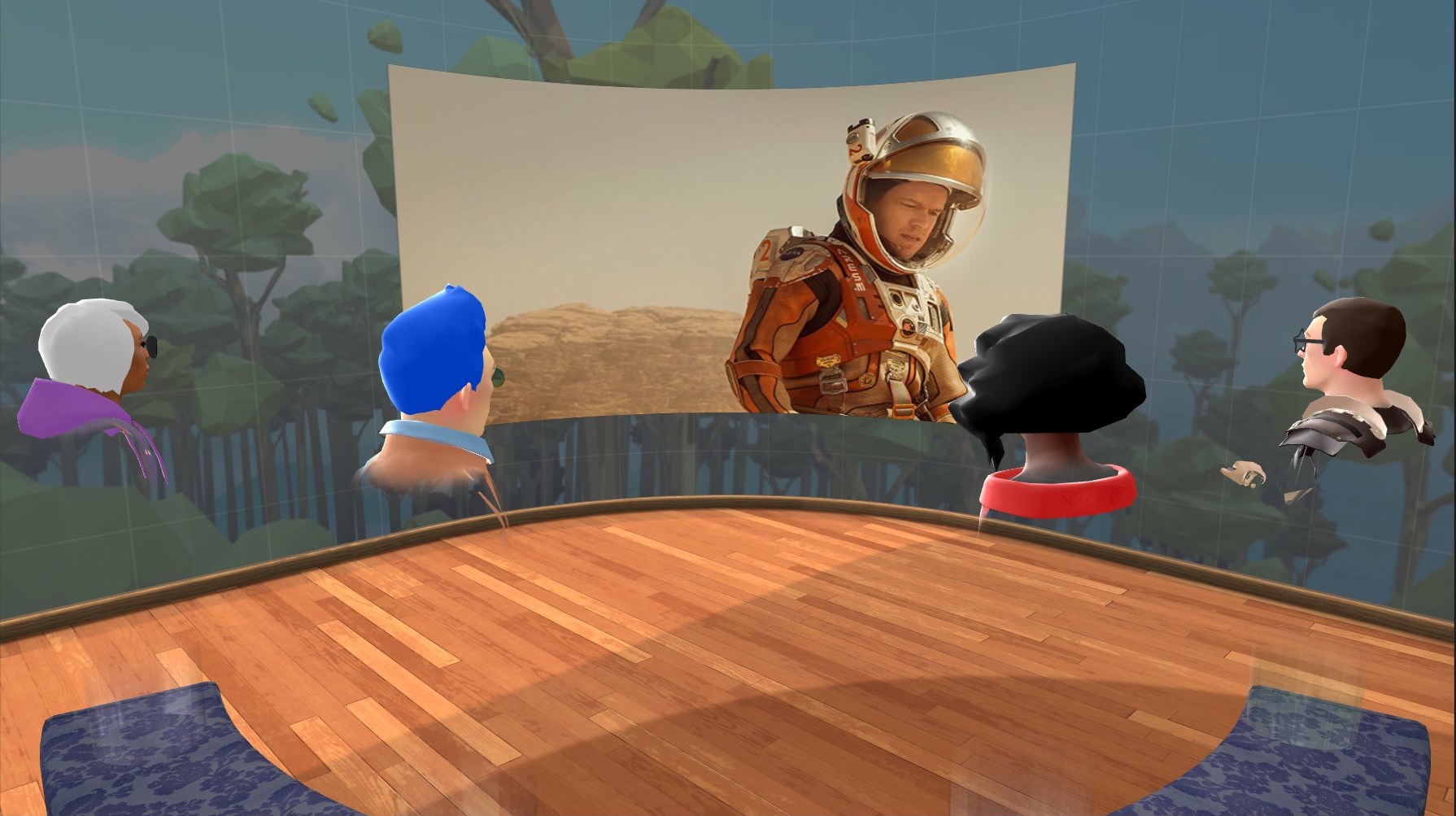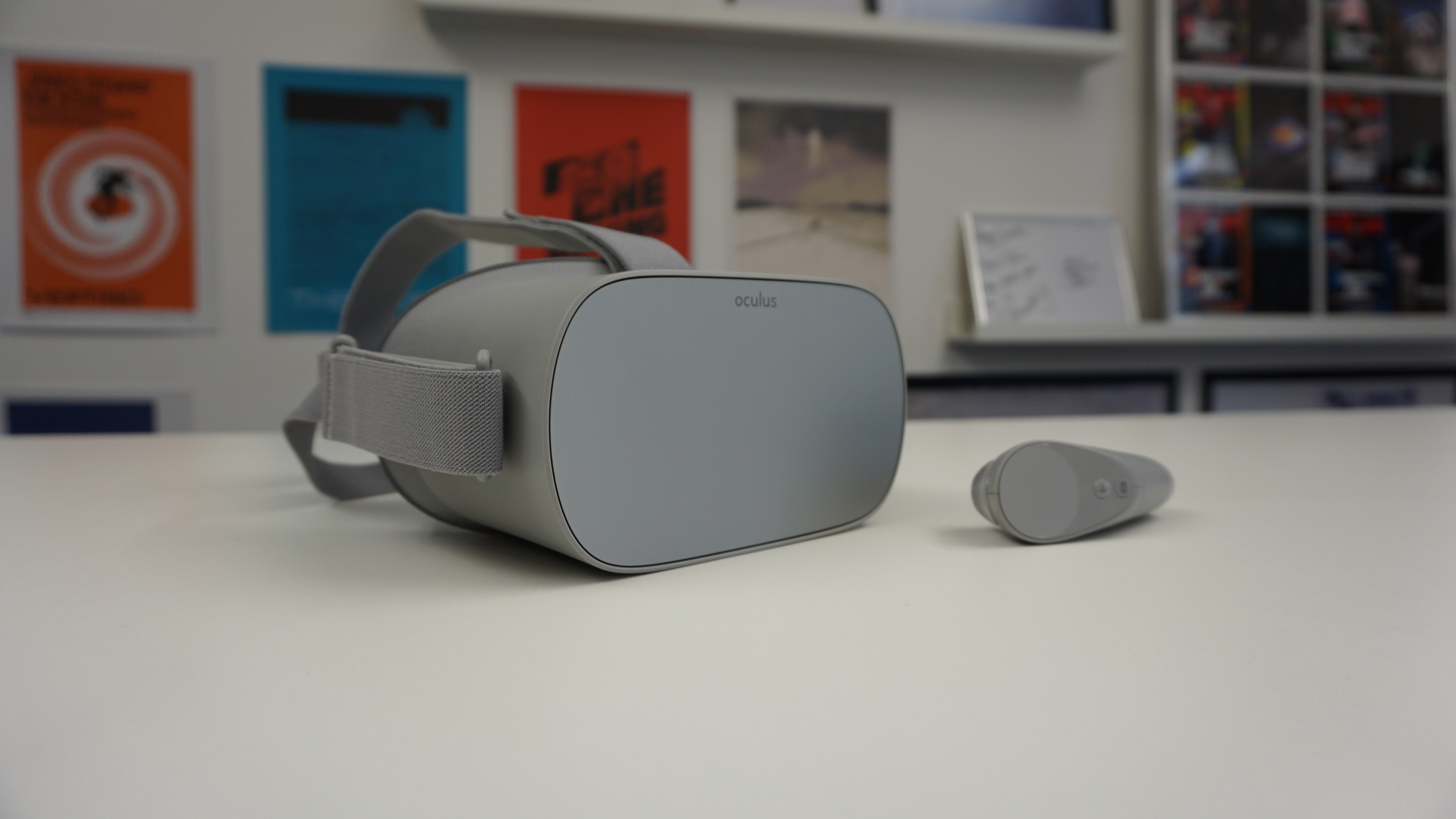Why you can trust TechRadar
Performance
The Oculus Go launches in a somewhat interesting climate for virtual reality, at least in terms of users’ expectations – with the medium still in its relative infancy, what should users expect from what’s being billed as a relatively affordable entry point to VR, especially if they’ve yet to try one of the pricey high-end headsets?
Because, despite its $199 / £199 price tag, the Oculus Go gives even the premium competition a run for its money.
While it may lack the dev studio clout of Sony’s headset, we were shocked to find that it offered a comparable experience to the PlayStation VR headset when the Go was pushed to its limits.

The Go in effect raises the stakes for all looking to develop VR hardware – as a standalone unit, it wipes the floor with the likes of Google Cardboard and even its own cousin (and also Oculus-developed) the Samsung Gear VR, while pushing what we should now come to expect for our money from the more expensive headsets, too.
Before talking up the surprisingly impressive performance aspects of the Oculus Go, however, it may be worth pointing out its most considerable limitation.
The Oculus Go makes use of an “Orientation Only” movement system – in other words, while you can turn your head and view a 360-degree world, and have your controller tracked within it, you can’t move through the virtual space.
If there’s something in the distance happening onscreen, physically walking towards it won’t bring it any closer, nor will leaning “into” the space ahead of you.
As such, it’s a bit more like being in a fighter pilot’s cockpit than, say, the freely-tracked movements of the HTC Vive or Oculus Rift. It’s equally worth noting, though, that the Go is designed to be an entry point for the VR-curious and so, if they’ve never used a VR headset before, may not even realize the extra-dimensional element that is missing.

Once you’re in a game or VR experience, however, it’s hard to fault the Oculus Go. Tracking (within the realms of movement supported) is accurate and comfortable, with little jerkiness that could otherwise increase the chances of feeling unpleasant nausea.
The 5.5-inch, 538 ppi panel (with a resolution of 2560 x 1440) is impressive, too, sharp enough to almost eliminate the “screen-door” effect earlier headsets suffered from. Oculus told us it used a fast-switch LCD display with the Go to have better pixel fill, meaning the pixels are simply larger and thus reduce the screen-door effect as well.
The goggles in front of the screen too appear improved over those of the Oculus Rift, which suffered from more pronounced glare than is present when using the Go.
It was a little bit fiddly to install, but the included glasses spacer was a welcome accessory, giving this glasses-wearing review team a little more room to accommodate our specs for comfortable viewing.

Built into the strap mounts that sit either side of your head, the speakers on the Go prove remarkably useful, too.
While they’re no replacement for a high-quality pair of headphones, they’re a great idea – as they’re not going directly into your ears, you’re given a sense of the ambient space in the real world around you, making bumping into something or missing a doorbell less likely when using the Go, while also avoiding unnecessary dangling cabling around the headset.
They lack the depth of a pair of good in-ears, and using them around friends may cause annoyance due to the sound leakage, but it’s a comfortable, fuss-free way of jumping straight in with some audio.
Games and apps
Games and experiences on the Oculus Go are a varied bunch – there are over 1,000 apps, movies, games and short-form VR experiences at launch for the Go, being a mixture of brand-new titles and remixed Rift and Gear VR content.
Oculus has a relatively open submission system for apps, making the quality of each experience vary – but there’s already a lot of great stuff to play with, and we’d rather have the option of dipping our toes into less-polished titles than not at all.

Whether rattling along a cartoony roller coaster firing at targets in Coaster Combat, jumping onstage into the middle of a 360-degree concert in the MelodyVR app or settling down for a sedate game of super-popular board game Catan in VR, the Oculus Go rarely stuttered during play.
Load times could be a little longer than you’d like, but when it’s firing on all cylinders, titles like sci-fi stealth-em-up Republique and space shooter Anshar Online look impressive considering there’s no external processing occurring (the Go houses a Snapdragon 821 processor, the same one found in handsets like the LG G6).

But, perhaps the best example of Oculus’s ambition with the Go is the new Oculus Rooms app, coming to Oculus Go and Gear VR. This is a customisable social space in which you can hang out with pals floating around, playing chess, sharing photos and watching films.
The sense of spatial audio is excellent, and hanging out with a pal from the other side of the world to watch a movie is an impressive, Ready Player One-like experience.
Moving to the other side of the room and then seeing the screen in the corner of the virtual living room continuing to play Matt Damon’s The Martian in the background (in 3D, no less) showed just how flexible and powerful shared social spaces in VR could be.
It’s worth noting that while Oculus Rift games can’t port over to Oculus Go, and the idea is that developers who’ve already made apps and games for Gear VR should be able to easily build versions for Oculus Go.
But as a sort-of consolation prize, Oculus Go does support cross-platform play between itself and the Oculus Rift and Gear VR, so you can play along with friends who own either of these headsets while you’re wearing your Oculus Go.
Current page: Performance, games and apps
Prev Page Introduction and design Next Page Battery life and verdictMichelle was previously a news editor at TechRadar, leading consumer tech news and reviews. Michelle is now a Content Strategist at Facebook. A versatile, highly effective content writer and skilled editor with a keen eye for detail, Michelle is a collaborative problem solver and covered everything from smartwatches and microprocessors to VR and self-driving cars.

